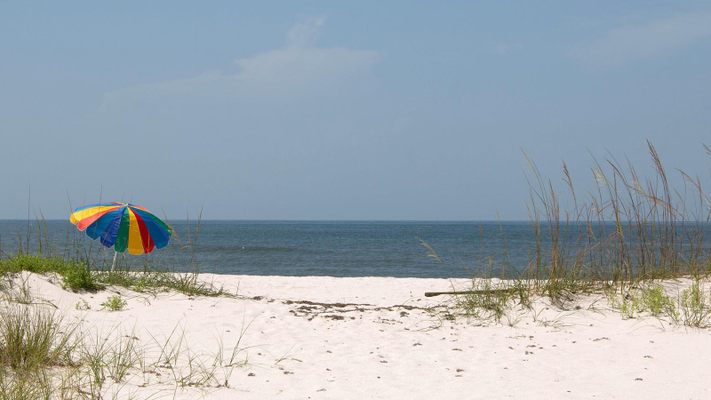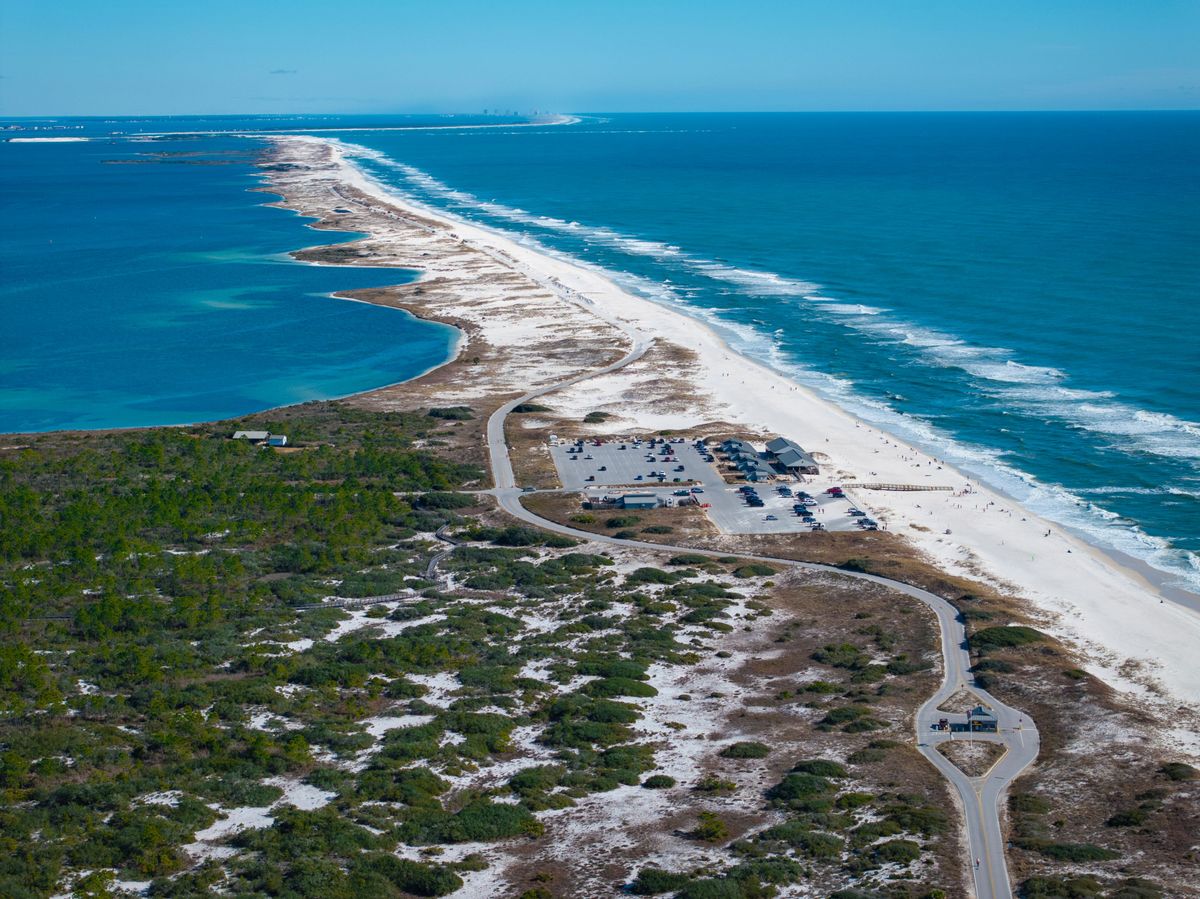About
Walking up to Johnson Beach feels like stumbling into a computer background: the windswept white sand beach is dotted with sunbathers and colorful umbrellas. Shore birds scurry up and down the shore as swimmers wade into the warm waters of the Gulf of Mexico. Johnson Beach is part of the Gulf Islands National Seashore, a 216-square mile unit of the National Park Service that stretches across Florida, Alabama, and Mississippi, stewarding habitats like bayous and coastal forests and overseeing historic forts. Its history, though, is a little more complicated.
During the Jim Crow era, most public beaches in Pensacola prohibited Black residents from using them. Most of the beaches that were open to Black people were polluted, unsafe, or difficult to access. But Johnson Beach was the exception. Located on the eastern tip of a barrier island, it provided a refuge where Black children and families could swim in safe, beautiful waters.
The beach’s name honors the legacy of Rosamond Johnson, Jr. At the age of 15, Johnson enlisted in the U.S. Army to support his family (lying and saying he was older, of course). Two years later, he was deployed during the Korean War, and after pulling two soldiers to safety during a battle, he was killed while trying to save a third. He was awarded a posthumous Purple Heart and eventually, the community named this beachin his honor. A memorial and plaque on the beach teach visitors about his life and each May, the Gulf Islands National Seashore holds a celebration in his honor.Driving access along the length of Johnson Beach is currently truncated, as the National Park Service works to add new parking areas and build new dune crossovers to the Gulf of Mexico. These crossovers are built to protect the fragile dune ecosystems, home of animals including the Perdido Key beach mouse. This critically endangered mouse can be found nowhere else in the world.
Related Tags
Know Before You Go
Johnson Beach is open from 5 a.m. to sunset, with no overnight parking allowed. Glass containers and pets of any kind are also prohibited.
The beach is a feed area: $15 for cyclists or pedestrians, or $25 for a vehicle. Each pass lasts one week, and only credit cards are accepted.
Beach wheelchairs are available on request at the ranger station.Johnson Beach Road is expected to reopen in early 2024
Published
February 22, 2024
Sources
- https://www.nps.gov/places/000/rosamond-johnson-beach.htm
- https://nps.gov/guis/learn/nature/gulf-of-mexico.htm
- https://www.nps.gov/guis/learn/nature/pk-beach-mouse.htm
- https://www.nps.gov/articles/beach-segregation.htm
- https://www.nps.gov/guis/learn/historyculture/rosamond-johnson.htm
- https://www.nps.gov/places/000/rosamond-johnson-beach.htm
- https://www.nps.gov/guis/planyourvisit/perdido-key-area.htm
- https://floridahikes.com/gulf-islands-national-seashore
- https://floridahikes.com/perdido-key-discovery-trail
- https://floridahikes.com/johnson-beach







































